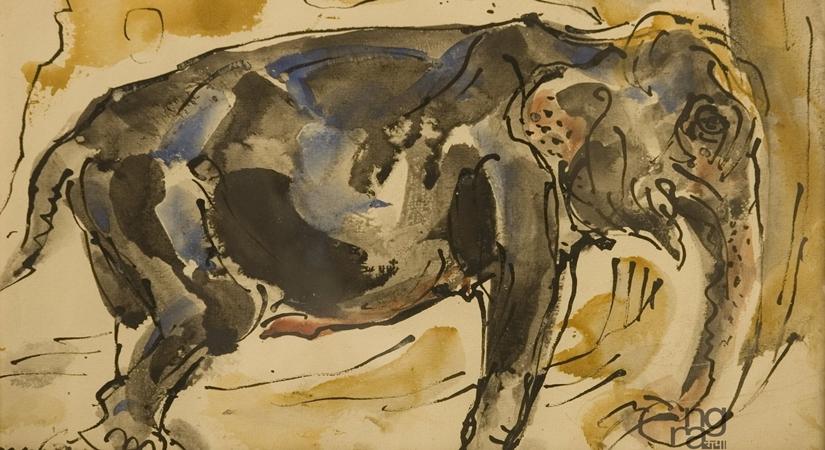Cover Story
NGMA's tribute to 115 years of Ramkinkar Baij

Virtually tour Ramkinkar Baij's journey through silent transformation and expressions
BySiddhi Jain
May 26, 2020 (IANSlife) Ramkinkar Baij (1906-1980), one of the most seminal artists of modern India and a guru to many, was an iconic sculptor, painter and graphic artist. On his 115th birth anniversary on May 26, witness a virtual tour on his life and work that comes as a tribute from the National Gallery of Modern Art (NGMA).
The virtual tour titled “Ramkinkar Baij | Journey through silent transformation and expressions” commemorates his 115 years, and showcases his work from the NGMA collection, which has 639 works of art by the iconic artist. The tour is grouped in a series of five different themes of Portrait, Life Study, Abstract and Structural Composition, Nature Study and Landscape and Sculptures.

Born in Bankura, West Bengal, he came from a family of little economic and social standing and grew by his sheer determination into one of the most distinguished early modernists of Indian art. In 1925, he made his way to Kala Bhavana, the art school at Santiniketan and was under the guidance of Nandalal Bose.
Encouraged by the liberating, intellectual environment of Santiniketan, his artistic skills and intellectual horizons blossomed, thus acquiring greater depth and complexity. Soon after completing his studies at Kala Bhavana he became a faculty member, and along with Nandalal Bose and Benodebehari Mukherjee played a pivotal role in making Santiniketan one of the most important centres for modern art in pre-Independent India.

Ramkinkar's monumental sculptures are established landmarks in public art. One of the earliest modernists in Indian art, he assimilated the idioms of the European modern visual language and yet was rooted in his own Indian ethos. He experimented restlessly with forms, moving freely from figurative to abstract and back to figurative, his themes were steeped in a deep sense of humanism and an instinctive understanding of the symbiotic relationship between man and nature.
Both in his paintings and sculptures, he pushed the limits of experimentation and ventured into the use of new materials. For instance, his use of unconventional material, for the time, such as cement concrete for his monumental public sculptures set a new precedent for art practices. The use of cement, laterite and mortar to model the figures, and the use of a personal style in which modern western and Indian pre-classical sculptural values were brought together was equally radical.

Although, his work was passed over for quite a while, gradually it began to get both national and international attention. In 1970, he was honoured with the Padma Bhushan for his irrefutable contribution to Indian art, among other noted honours. Ramkinkar made his last journey, after a period of illness, in Kolkata on August 2, 1980.
The tour can be taken at ngmaindia.gov.in/virtual-tour-of-ramkinkar-baij.asp.
(This article is a website exclusive and cannot be reproduced without permission of IANSlife)
Siddhi Jain can be contacted at siddhi.j@ians.in


